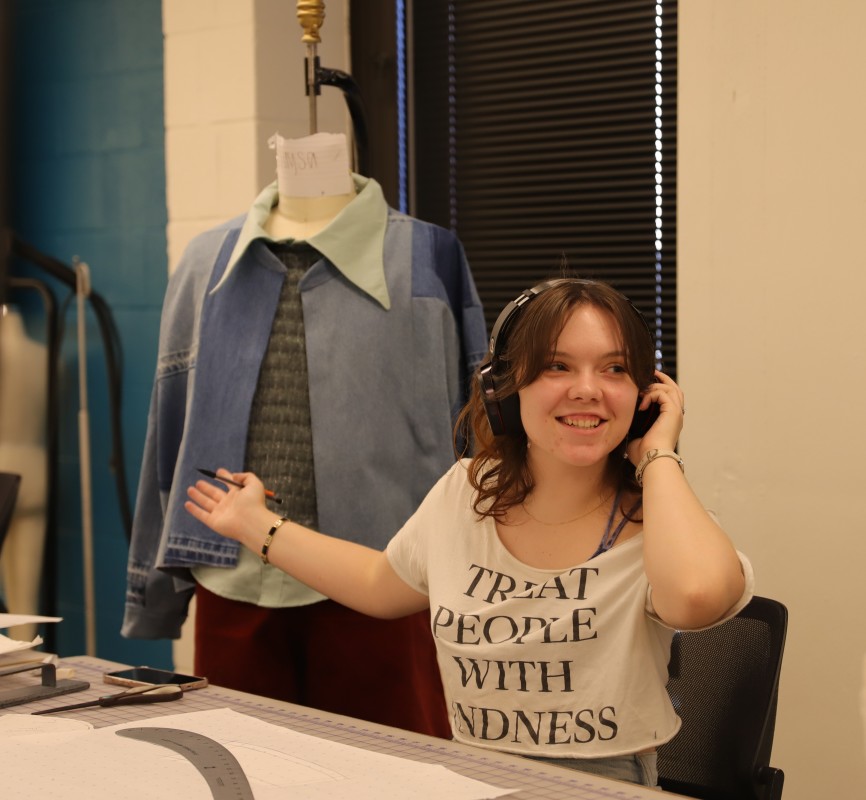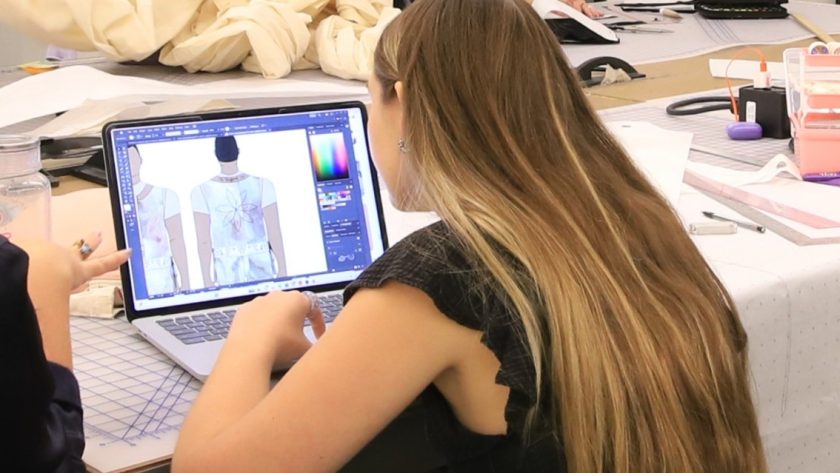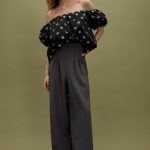The fashion industry might be known for its celebrity allure and outsized glamour, but students tend to understand that there’s much more to it. This is especially true for those at Belmont University’s O’More College of Architecture & Design, where scholars are completing a two-semester-long project catering to underserved markets.
Located in Nashville, Tenn. — which is emerging as a hub for fashion design with the help of labels like Genesco, Inc., Modiste, ABLE and Johnathan Kayne — Belmont’s fashion design program at the O’More College of Architecture & Design has been named one of the top 10 fashion programs in the South and one of the top 40 in the U.S. overall. A major component of the curriculum includes the Junior Design Studio project where students craft collections that are “adaptive, niche or underserved in terms of the target customer,” Professor Laura Horner explains.
The project spans both semesters of students’ third year and results in five completed looks by the end of spring. Horner offers students ideas in psychology as a “really good jumping off point” to conceptualize the project. Specifically, she refers to Maslow’s hierarchy of needs “to think about, how does that apply to clothing in terms of comfort, a sense of belonging, self-esteem, protection.”
This year, students have chosen to make collections for women with midline catheters, children who wear medically adaptive clothing and those with Type 1 diabetes, among others. Regardless of which approach students take, Horner emphasizes that the school’s small class sizes help students receive tailored attention while developing their ideas, from conception to execution.
This “warm, supportive environment” is what differentiates Belmont’s design program from others, Andie Day, an assistant professor at the college, says. “The professors have really strong relationships with the students, and they’re really comfortable with us. We want to really challenge (students) and push them to grow to be the best designers that they can be.”
Photo: Ed Atlas/Courtesy of Belmont University
Student Lauren Kelley, who is designing pieces for neurodivergent communities and specifically those diagnosed with anxiety, explains that the attention from professors has helped her pick up skills more quickly.
“I used to sew when I was little, but I was never as good as I thought I could be to be in a program like this, but you really do surprise yourself at how much you learn and how fast you learn it,” she says. “In my collection, I’m inventing ways to stimulate four out of the five senses to ground someone who’s experiencing anxiety… I’m doing that through compression and weighted tops, such as binders and soft, textured fabrics. My color palette is proven to soothe anxiety, and I have oversized silhouettes, scent patches and places to clip and store fidget toys.”
For students like Callie Reeder, who is working on medically accessible children’s clothing with a playful spirit, the Junior Design Studio project hasn’t just changed what she hopes to do after graduation, but she says it also “reignited (her) passion for design” after feeling “put in a box” with previous work.
“I’m just loving what I’m working on, and it makes me even more passionate about it. I know that it’s for a good cause,” Reeder reveals. “I feel like it’s just taught me a lot about designing for a greater purpose. Before this project, I never made anything directed towards a specific market. It’s just opened my eyes to the way that design can make people’s lives better and enhance their day to day.”
Photo: Courtesy of Belmont University
“We are proud to exemplify a mission-based approach that places purposeful design at the heart of our curriculum,” Chair of Fashion Jamie Atlas tells Fashionista.
Students at O’More tend to appreciate how the project offers them some “real world” preparedness. Sophia Ramacciotti, who is developing clothes for those with hyperthyroidism, believes the program is uniquely preparing her and classmates for the industry, especially as awareness grows for gaps in options available for plus size shoppers and in adaptive clothing.
“It’s bringing to light how, in the fashion industry, there are holes that we don’t really talk about in terms of markets and who we’re designing for,” Ramacciotti notes. “One of the major things that I want to do in the fashion industry is help people feel beautiful no matter who they are. This feels like a stepping stone for setting me up for being in the fashion industry after college.”
For faculty, after all, preparing students for successful industry careers is a major goal.
“School is an amazing place to really live out your creativity, but once they get out into the industry, they will be working towards serving customers’ needs at whatever level that takes form. Even if you’re working for a very high-level company, customer response has to be part of your design process,” Horner explains. The project can be daunting at first, she says, but also, because of that, it’s “incredibly beneficial” for students.

Photo: Ed Atlas/Courtesy of Belmont University
Jey Maroney is assembling a collection for colorblind shoppers, and she appreciates that the project requires doing deep research into a target market. She says, “it has to be sellable… instead of just being a piece that would be haute couture. I think that really helps in the long run because then you have a different mindset.”
“A hurdle for a project such as this is realizing that, ultimately, part of the design process and part of the creative process is the problem solving. So we’re bringing together the form and the function in this project,” Horner adds. “I think it can be challenging to step outside of the comfort zone and really think about how your empathy for customers can develop into your creative ideas and what you’re solving.”
Dean of Belmont’s O’More College Architecture & Design Dr. Jhennifer Amundson stresses that the curriculum’s goal is to holistically develop students — it’s not just fostering an entrepreneurial mindset, design prowess and collaboration skills, but it’s also training them to serve their communities.”
“In this realm, our students not only achieve remarkable success but also inspire others with their dedication and their commitment to excellence,” Dr. Amundson says.
Learn more and discover scholarship opportunities at
Want the latest fashion industry news first? Sign up for our daily newsletter.



